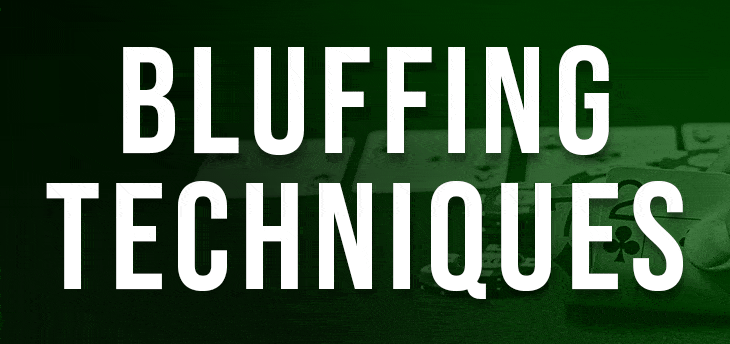Have you ever watched the final table of a major poker tournament and wondered, “How in the world did they know to bluff right there?” It’s a marvel, isn’t it? But it’s not magic. It’s art, mixed with a fair share of science, and today, we’re going to delve into the heart of this complex but fascinating subject. Welcome to the riveting world of advanced bluffing techniques, where we break down the audacious and calculated world of strategic bluffs and masterful bluffs.
Anatomy of a Bluff: What Makes a Bluff Successful?
Understand that bluffing isn’t just about trying to con your opponent into thinking you have the better hand. It’s a sophisticated ballet dance with cards, a psychological warfare waged with chips and betting patterns. A successful bluff boils down to a few key components:
- Understanding Your Opponents: Opponent profiling, as some pros call it, is crucial in making a bluff work. Are they risk-averse, or do they enjoy a good gamble? Are they perceptive, or can you run a tractor through their focus without them noticing?
- Game Dynamics: Do you have a tight image? Have you been conservative with your betting, or are you seen as a loose cannon? Your table image plays a big role in making your bluff believable.
- Betting Patterns: How you’ve bet in the past, and how you choose to bet during a bluff can mean the difference between a successful bluff and an epic fail.
Think of bluffing like constructing a compelling narrative. You’re a storyteller, your chips are the plot, and the ending, well, we all love a good twist, don’t we?

The Art of Timing: When to Make Your Move
Making big bluffs at the right time is like telling a perfectly timed joke. It’s all about delivering the punchline when the audience least expects it. But, how can you be sure it’s the right moment for a bluff? You can’t, not entirely. But there are cues you can pick up on.
Look for situations when your opponents are more likely to fold. Perhaps they’re short-stacked, or the board looks threatening. Maybe they’re under the gun, or the pot odds are not in their favor. These are situations where a well-executed bluff can pay dividends. Remember, timing isn’t about waiting for the perfect moment. It’s about creating the perfect moment.
The Science of Strategic Bluffs
Strategic bluffs are not whimsical, spur-of-the-moment decisions. They are long-term plans executed with precision. And they require a deep understanding of your opponents, their patterns, and the game’s dynamics.
One of the strategic bluffing techniques pros love is the “float.” Floating is calling a bet with no hand or draw, intending to bluff on later streets. It’s the poker equivalent of shadow boxing, and when done right, it can truly unnerve your opponent.
Let’s illustrate this with an example, shall we? Suppose you’re playing Texas Hold’em. The flop comes, and your hand isn’t worth writing home about. Your opponent, sensing weakness, fires a bet. Instead of folding, you call, giving the impression that you might have a strong hand or a decent draw.
The turn isn’t any better for you, but now, your opponent checks, indicating hesitation. This is your cue. You launch an attack with a well-placed bet, forcing them into a difficult decision. The result? More often than not, a successful bluff!
Mastering Masterful Bluffs: The Game Changers
If strategic bluffs are the science of bluffing, masterful bluffs are the art form. They are calculated risks taken with flair and style. But remember, they’re not for the faint-hearted!
One such technique is the “overbet bluff.” This is when you bet more than the size of the pot, creating an illusion of immense strength. It’s the poker equivalent of hitting the nitro boost in a street race – risky, but potentially game-changing.

Anatomy of a Fold: Understanding When to Back Down
Here’s the thing about bluffing techniques, they’re not a magic wand. Sometimes, no matter how well you’ve played your cards, your opponent might just have the better hand. Knowing when to back down, to fold despite the elaborate bluff, is just as important as knowing when to bluff.
Look for signs of strength from your opponents. Increased betting, body language, change in behavior, or sudden aggression can all be signals that your bluff might not work. It’s not about admitting defeat, but about living to fight another round.
Mind Over Cards: The Psychology of Bluffing
Bluffing isn’t just about cards and chips; it’s about minds and egos. It’s a psychological game, and the one who understands the human mind better often has the upper hand. Reading tells, projecting false tells, manipulating opponent’s decisions – these are all part of the mind games that go hand in hand with bluffing. Remember, poker isn’t played on a table; it’s played between the ears.
Conclusion: The Symphony of Bluffing
Bluffing in poker isn’t about tricking your opponents into thinking you have a strong hand. It’s about understanding the game’s dynamics, analyzing your opponents, executing strategic bluffs at the right time, and knowing when to back down. It’s a symphony of tactics, strategy, and psychology, all orchestrated to create a moment of thrilling uncertainty.
Remember, bluffing isn’t just an act; it’s a strategy. It’s not just about the moment; it’s about the process. So the next time you’re on that poker table, don’t just bluff. Create a narrative, craft a strategy, and paint a masterstroke. Here’s to making big bluffs at the right time!

